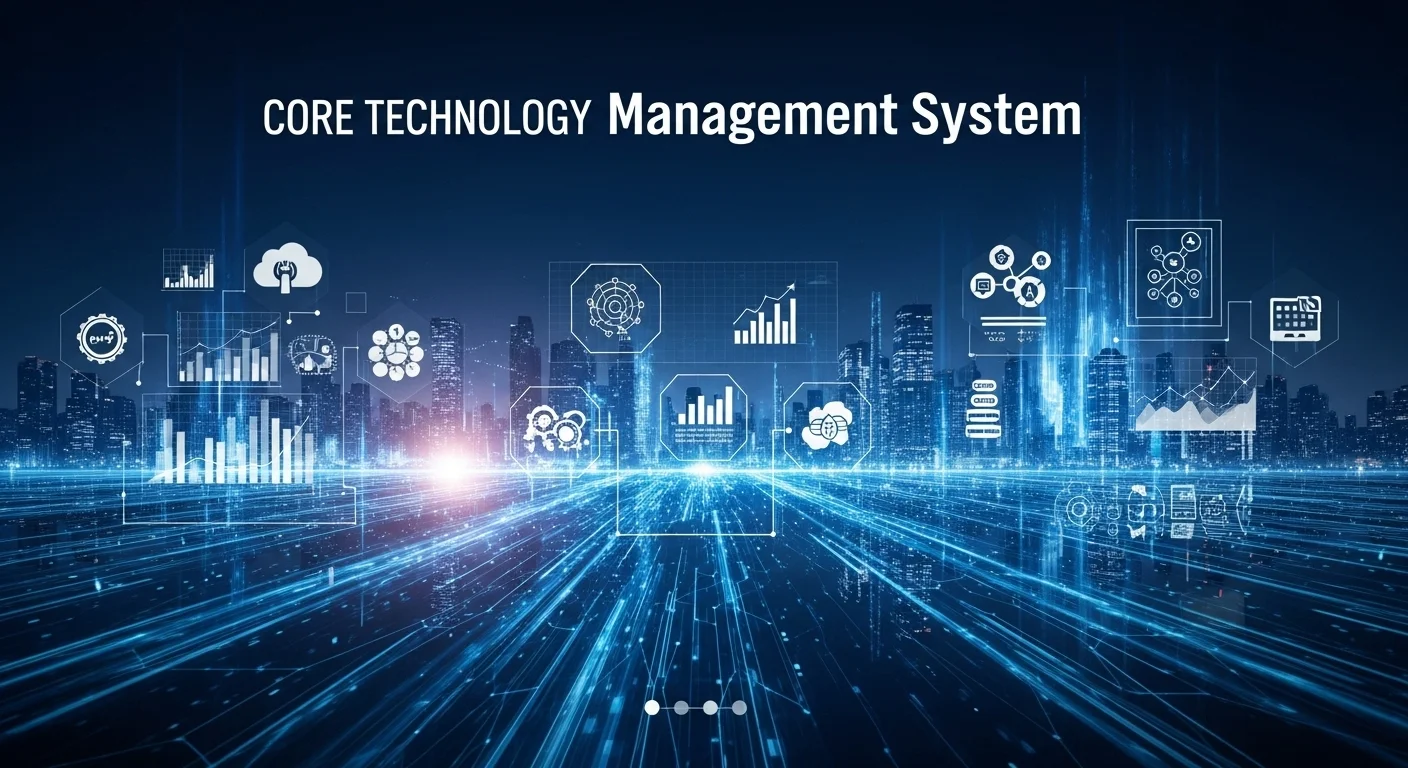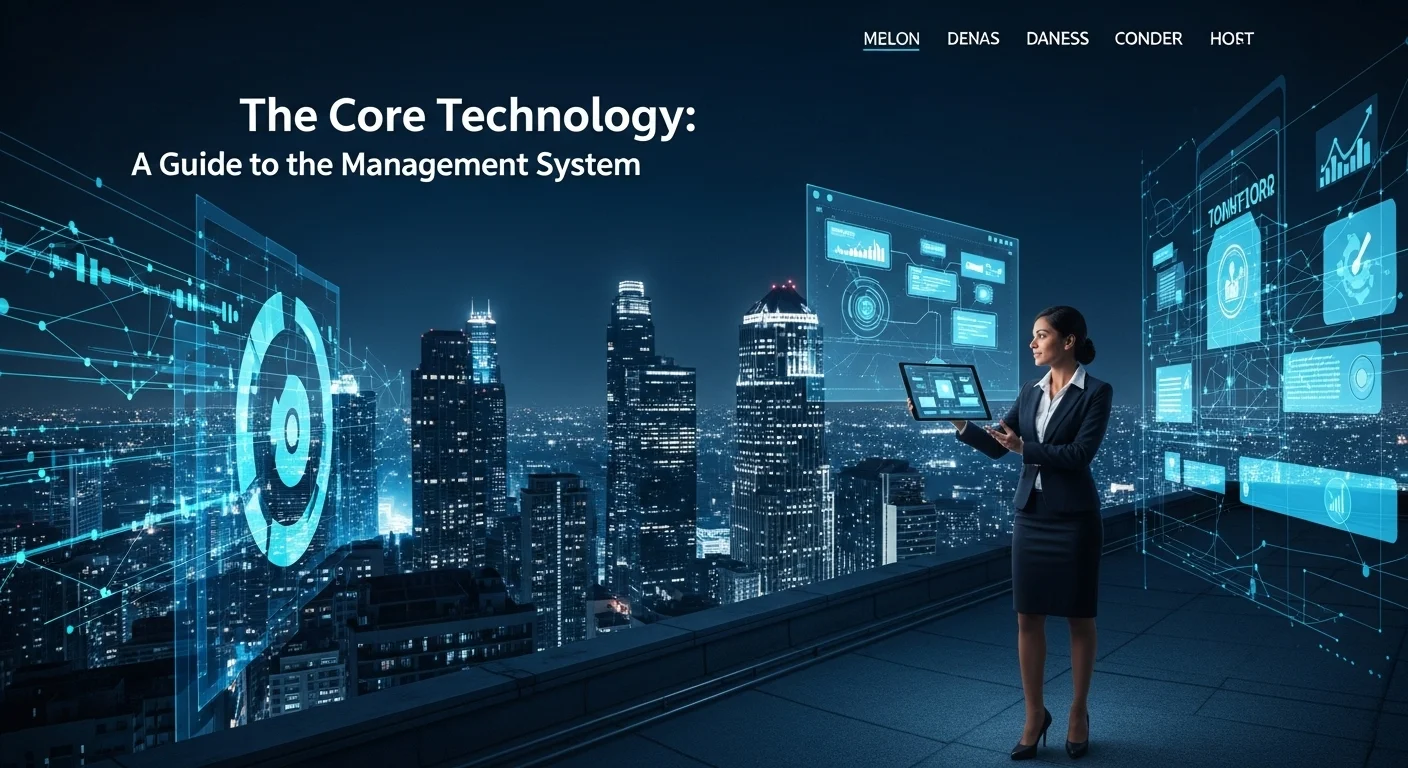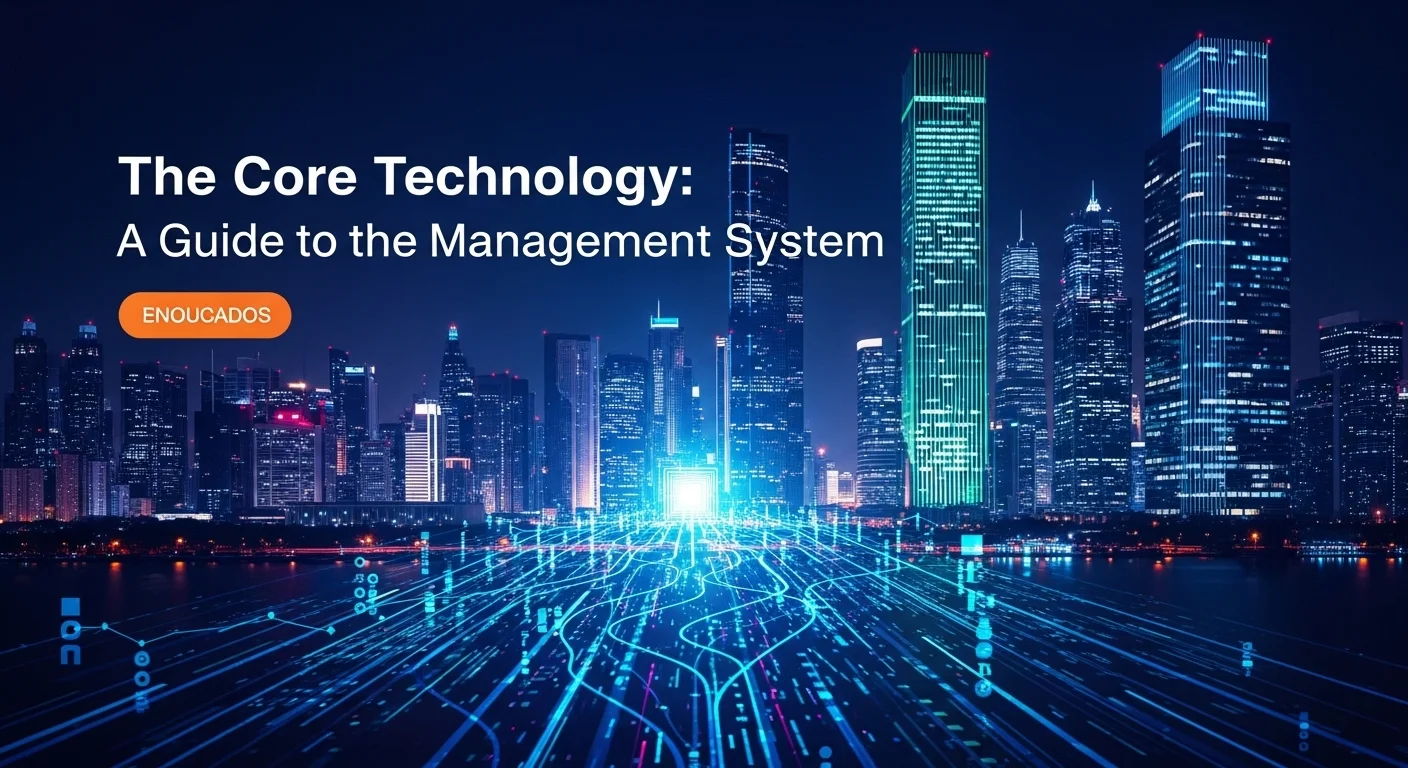What is a Management System? A Plain-English Guide for Business & Home

Executive Summary
It feels like everything runs on some kind of system these days, doesn't it? From the apps that organize a global company's sales to the tech that dims your living room lights for movie night. That's the power of a 'Management System'. In this guide, I'll walk you through what these systems actually are, cutting through the jargon. We'll explore how they fuel businesses, why a solid cybersecurity system is non-negotiable, and how you can find the perfect one to make your own home smarter and your life easier. It's a journey into the invisible frameworks that make our modern world tick, and I'm here to be your guide.
Table of Contents
What is a Management System and Why Does It Matter?
Table of Contents
- What is a Management System and Why Does It Matter?
- The Unseen Guardian: Cyber Security Management Systems
- Managed Security: Getting Expert Help
- Bringing it Home: The Smart Home Revolution
- Finding the Best Home Management System for You
- A Bright Idea: The Smart Lighting System
In my 15 years working in tech integration, I’ve seen countless buzzwords come and go. But one concept has remained the absolute bedrock of progress: the 'Management System.' At its heart, a management system is simply a way of organizing things—a set of rules, processes, and tools—to achieve a specific goal. It sounds like something out of a business textbook, but in technology, it's the invisible architecture that keeps our digital world from falling into chaos. It’s what allows a small startup to operate with the efficiency of a giant corporation and what makes your smart home feel, well, smart. From the biggest companies to the coziest homes, these systems are the quiet engines running in the background.
The evolution of these systems is a story I love because it mirrors the growth of tech itself. We went from paper ledgers and manual checklists to incredibly sophisticated, AI-powered platforms that live in the cloud. In the business world, this gave us game-changers like ERPs and CRMs, designed to make specific parts of a business run like a well-oiled machine. They centralize information, automate tedious tasks, and give leaders the data they need to make smart decisions. I've seen firsthand how a company without a good system is like a ship without a rudder, tossed around by operational chaos. These frameworks level the playing field, allowing businesses to grow without their processes breaking down.
The Unseen Guardian: Cyber Security Management Systems
As we moved our most valuable information online, a critical new challenge appeared: how to protect it all. This is where the cyber security management system steps in. Think of it as a comprehensive security strategy for your digital assets, often called an Information Security Management System (ISMS). It’s not just about installing some antivirus software. It's a holistic plan that involves people, processes, and technology. Its main job is to keep your information confidential, accurate, and available when you need it. To do this, we identify potential threats, put controls in place to stop them, and constantly check to make sure those controls are working. In today's world, where a single data breach can be devastating, a robust ISMS isn't just a good idea; it's essential for survival and earning customer trust.
Managed Security: Getting Expert Help
Let's be realistic: building a top-tier cybersecurity team is tough and expensive, especially for smaller businesses. That’s where managed security systems come in. Offered by specialized companies (we call them MSSPs), these services are like having an elite cybersecurity team on call, 24/7. They handle the monitoring, threat hunting, and incident response for you, all for a fraction of what it would cost to build in-house. I often recommend this route because it democratizes security. It allows a local business to have the same level of protection as a Fortune 500 company. It’s a strategic move that lets you focus on what you do best, knowing your digital front is being watched by experts.
Bringing it Home: The Smart Home Revolution
Management systems aren't just for boardrooms and data centers. They've found a new, exciting life inside our homes. A smart home management system is the brain of your connected house. It's the hub and app that lets you control everything—lights, thermostats, cameras, speakers—from one place. The goal? To make your home more convenient, efficient, and secure. The real magic happens when you create routines. For example, my 'Goodbye' routine locks the doors, sets the thermostat to an energy-saving mode, and turns off all the lights with a single tap. It's this integration that turns a bunch of cool gadgets into a truly intelligent and helpful environment.
Finding the Best Home Management System for You
The search for the best home management system can feel overwhelming because the 'best' one really depends on you. Your technical skill, your budget, and the devices you already have all play a role. A key thing I tell people to look for is interoperability—how well devices from different brands play together. For beginners, ecosystems like Google Home or Apple HomeKit are fantastic because they're user-friendly and have a wide range of compatible products. For tinkerers like me, a more advanced, locally controlled system like Home Assistant offers incredible power and privacy. The best system is the one that fits your life, simplifies your day, and just works reliably.
A Bright Idea: The Smart Lighting System
If you're looking for the perfect entry point into the smart home world, start with a smart lighting management system. It's a perfect example of how these systems work. You're not just turning lights on and off; you're controlling the entire mood of your home. You can dim the lights for a movie, change their color for a party, or schedule them to simulate being home while you're on vacation. A well-designed lighting system can even support your health by changing color temperature throughout the day to match natural sunlight. It's a simple change that has a huge impact, demonstrating how a focused management system can transform an everyday part of life into something special.

Your Complete Guide to Implementing Management Systems
Alright, so we've covered the 'what' and 'why.' Now let's get into the 'how.' This is where the rubber meets the road—the practical steps and technical know-how for making these systems work for you. Whether you're a business leader planning a digital overhaul or a homeowner diving into smart tech, the core principles are the same: have a clear goal, choose your tools wisely, and always, always focus on the user experience. This is your roadmap to building something truly intelligent.
A Closer Look at Business Management Systems
To really get it, you have to understand the different flavors of business systems. These aren't just pieces of software; they're digital blueprints for running a company.
- Enterprise Resource Planning (ERP): Think of an ERP as the central nervous system of a company. It connects all the vital organs—finance, HR, manufacturing, supply chain—into one unified system. I remember the days before ERPs; departments were like separate islands, each with their own data. It was a mess. An ERP creates a 'single source of truth,' so everyone is working from the same playbook. When sales enters an order, inventory and finance are updated automatically. It’s all about seamless information flow.
- Customer Relationship Management (CRM): If an ERP is the company's internal brain, the CRM is its heart, focused entirely on the customer. It's a system for managing every interaction you have with your customers, from the first marketing email to post-sale support. A good CRM gives you a complete picture of each customer, helping your sales team nurture leads and your support team provide amazing service. In my experience, a business that masters its CRM builds stronger, longer-lasting customer relationships.
- Content & Document Management (CMS & DMS): In our world, information is everything. A CMS helps you manage your website content without needing to be a coding genius. A DMS does the same for your internal documents, making sure everyone is using the latest version of a file, which is critical for things like compliance and knowledge sharing.
How to Build a Cyber Security Management System (ISMS)
Setting up a cyber security management system is a marathon, not a sprint. It's a continuous cycle. I've guided dozens of companies through this, and the Plan-Do-Check-Act model is my go-to framework:
- Plan: First, you define your scope. What are you protecting? You'll create your security policy, set goals, and perform a risk assessment to find your weak spots. This is the blueprinting phase.
- Do: Now you build. You implement the security controls—technical, procedural, and physical—to address the risks you found. This is also where you train your people, because a well-informed team is your best defense.
- Check: You can't just set it and forget it. You have to constantly monitor, run audits, and review performance. Is it actually working? This phase tells you.
- Act: Based on what you learned in the 'Check' phase, you make improvements. You patch holes, update policies, and adapt to new threats. The goal is constant improvement, because the bad guys are always evolving.
Building Your Ultimate Smart Home: The Tech Guide
Creating the best home management system is a fun project that blends planning with a bit of tech savvy. Here’s my advice for building a solid foundation.
- The Brain (The Hub): While some devices work over Wi-Fi, a dedicated hub is the secret to a powerful and reliable smart home. Hubs like Hubitat or platforms like Home Assistant (my personal favorite) process everything locally. That means they're faster and still work even if your internet goes down. They also act as translators for different device languages like Zigbee and Z-Wave. This is the core of a truly integrated smart home management system.
- The Languages (The Protocols): Trust me, you don't want 50 smart bulbs clogging up your Wi-Fi. I learned that the hard way. That's why protocols like Zigbee and Z-Wave are so great; they are low-power networks built just for smart devices. And keep an eye on Matter—it’s a new universal standard backed by all the big players that promises to make device compatibility a thing of the past.
- Case Study: A Truly Smart Lighting System: Let's apply this. Instead of Wi-Fi bulbs, use Zigbee bulbs. They create their own robust network and talk to your hub. Then, in your hub's app, you can build amazing automations. For example: 'If the front door opens after sunset, turn on the entryway light to 80% for 5 minutes.' That granular, local control is what separates a basic setup from a truly smart one.
Choosing a Managed Security Partner
For businesses opting for managed security systems, choosing a provider is like choosing a business partner. Don't just look at the price. Dig into their response times, check out the technology they use, and ask to see sample reports. Most importantly, do they get your business? A great partner becomes an extension of your team, giving you not just alerts, but actionable advice to make your whole organization safer.

Tips & Strategies to Master Your Management System
Having a system is the first step. Making it sing is the next. Whether you're trying to get the most out of your company's software or creating a smart home that feels truly effortless, the right strategies make all the difference. Here are a few tips I've picked up over the years to help you move from a system that's just functional to one that's indispensable. Let's unlock the full potential of your tech.
Best Practices for Your Business Systems
A powerful CRM or ERP is a huge investment. Here’s how to make sure it pays off.
- Focus on Your People: The #1 reason these multi-million dollar systems fail? People don't use them. I've seen it happen. Don't just run a one-off training session. Explain *why* the new system helps them in their daily job. Get key people involved early to become champions for the change. Provide ongoing support and make it easy to ask for help.
- Protect Your Data Quality: Your system is only as good as the data inside it. It’s the simple truth of 'garbage in, garbage out.' Create clear rules for who enters and manages data. Use the system's tools to prevent errors before they happen, and schedule regular clean-ups to keep your data fresh and accurate. This is the foundation of trust in your system.
- Connect Everything: The real magic happens when your systems talk to each other. Connect your CRM to your marketing platform, or your ERP to your e-commerce site. This integration creates a seamless flow of information, cuts down on mind-numbing manual entry, and gives you a complete, 360-degree view of your business.
- Build for Growth: Your business will change, so your systems need to be able to change with it. When choosing a platform, especially a cloud-based one, think about scalability. Can it handle more users and more data down the road? Picking a flexible system from the start will save you a world of pain later.
Advanced Strategies for Your Cyber Security
A basic cyber security management system is table stakes. To stay ahead, you need to evolve.
- Bring in the AI: Modern cyber threats move too fast for humans alone. AI-powered security tools can spot unusual patterns in massive amounts of data, helping you shift from a reactive to a proactive security stance.
- Adopt a 'Zero Trust' Mindset: The old idea of a secure network perimeter is dead. Zero Trust means 'never trust, always verify.' Every person and every device has to prove they are who they say they are before getting access to anything, even if they're already 'inside' the network. It dramatically reduces an attacker's ability to move around if they do get in.
- Make Your Managed Security a Partnership: If you use an outside firm for your managed security systems, treat them like a true partner. Have regular meetings, share your business goals, and work together on a strategy. The more they understand your world, the better they can protect it.
Taking Your Smart Home to the Next Level
The best home management system is one that you constantly refine. Here’s how to make your home even smarter.
- Create Smarter Automations: Go beyond simple 'if this, then that.' Create automations with multiple conditions. Here’s one of mine: 'If it's after sunset AND the living room TV is on AND my phone is home, then dim the living room lights to 30%.' That kind of context-aware automation is what makes a smart home feel truly magical.
- Prioritize Privacy: A smart home needs to be a safe home. Put your smart gadgets on a separate guest Wi-Fi network. Use strong, unique passwords and two-factor authentication everywhere. Before you buy a new device, check its privacy policy. For ultimate peace of mind, a locally controlled smart home management system like Home Assistant is a great choice as it keeps your data inside your house.
- Fine-Tune Your Lighting: A great smart lighting management system can improve your well-being. Try 'adaptive lighting' features that automatically change the color of your lights throughout the day—cool and bright in the morning, warm and soft in the evening. It can seriously help your sleep.
A Glimpse into the Future
The evolution of these systems is only getting faster, thanks to AI and the Internet of Things. We're heading towards a future of hyper-automation, where systems don't just do what we tell them, but anticipate our needs. Think of business systems that predict supply chain problems before they happen, or a smart home that knows what you need without you ever saying a word. The future isn't about us commanding our tech; it's about our tech understanding us. For a fascinating look at this, an article from WIRED on 'ambient computing' really breaks down where we're headed. The lines between business, security, and personal systems will continue to blur into one large, intelligent digital world.
Expert Reviews & Testimonials
Sarah Johnson, Business Owner ⭐⭐⭐⭐
As a small business owner, I found this a good starting point. I wish it had a few more real-world examples for companies my size, but the explanations were clear. A solid overview.
Mike Chen, IT Consultant ⭐⭐⭐⭐
This was a really helpful guide. As an IT consultant, I appreciated the breakdown of different systems. Some parts were a little dense, but overall, it clarified a lot for me.
Emma Davis, Tech Expert ⭐⭐⭐⭐⭐
Finally, an article that explains it all in one place! This was incredibly thorough and well-written. It connected a lot of dots for my work in tech. Definitely bookmarking this one.



